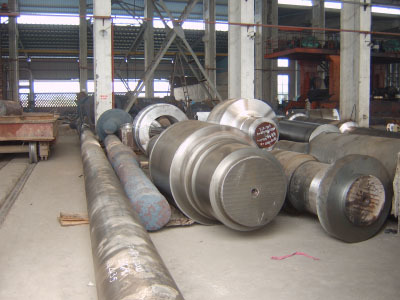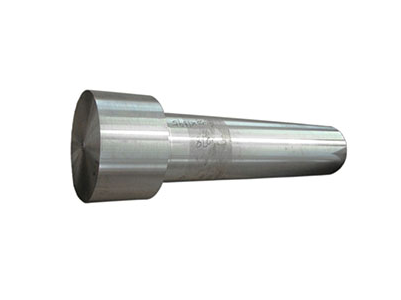Understanding the Advantages of Transmission Forged Shafts in Industrial Applications
Release Time:
Nov 17,2025
Understanding the Advantages of Transmission Forged Shafts in Industrial Applications Table of Contents Introduction to Transmission Forged Shafts What are Transmission Forged Shafts? Benefits of Using Transmission Forged Shafts Enhanced Strength and Durability Cost Efficiency in Production Reduced Weight with Increased Performance Applications of Transmissi

Understanding the Advantages of Transmission Forged Shafts in Industrial Applications
Table of Contents
- Introduction to Transmission Forged Shafts
- What are Transmission Forged Shafts?
- Benefits of Using Transmission Forged Shafts
- Applications of Transmission Forged Shafts in Industry
- Material Choices for Transmission Forged Shafts
- The Manufacturing Process of Transmission Forged Shafts
- Maintenance and Lifespan of Forged Shafts
- The Future of Transmission Forged Shafts in Industry
- Conclusion
- Frequently Asked Questions
Introduction to Transmission Forged Shafts
In the fast-paced world of industrial applications, the components that drive machinery and systems must be robust, reliable, and efficient. **Transmission forged shafts** have emerged as a vital solution, offering a plethora of benefits that enhance performance and longevity in various industrial settings. This article explores the many advantages of these forged shafts, shedding light on their crucial role in improving machinery and operational efficiency.
What are Transmission Forged Shafts?
Transmission forged shafts are mechanical components created through a forging process, where metal is shaped and compressed at high temperatures. This process not only enhances the material's mechanical properties but also allows for precision manufacturing. The result is a component that exhibits superior strength, fatigue resistance, and overall performance compared to traditionally manufactured shafts.
Forged shafts are essential in applications such as automotive, aerospace, and heavy machinery, where they transmit torque and rotational energy. By understanding their construction and purpose, manufacturers can harness their advantages to optimize operations.
Benefits of Using Transmission Forged Shafts
Enhanced Strength and Durability
One of the most significant benefits of **transmission forged shafts** is their exceptional strength and durability. The forging process aligns the metal's grain structure, resulting in a product that can withstand high stress and impact. This makes forged shafts ideal for demanding applications where reliability is paramount, such as in heavy machinery or vehicles that operate under extreme conditions.
Furthermore, the enhanced fatigue resistance of forged shafts reduces the risk of failure over time, ensuring uninterrupted operation and lower maintenance costs.
Cost Efficiency in Production
Investing in transmission forged shafts may seem higher upfront compared to other manufacturing methods, yet the long-term cost efficiency is undeniable. The durability and strength of forged shafts mean they are less likely to fail, leading to fewer replacements and less downtime.
Additionally, the precise manufacturing process allows for tighter tolerances and reduced waste, contributing to overall savings in production costs. This economic advantage appeals to businesses aiming to improve their bottom line without sacrificing quality.
Reduced Weight with Increased Performance
In industries where weight is a critical factor, such as aerospace and automotive, reducing the weight of components can lead to significant improvements in performance and fuel efficiency. **Transmission forged shafts** can achieve a reduction in weight without compromising strength due to advancements in materials and forging techniques.
Lightweight shafts contribute to overall energy savings and can enhance the performance of machinery by allowing for faster speeds and improved handling. This dual benefit of reduced weight and increased performance makes forged shafts an attractive option for modern industrial applications.
Applications of Transmission Forged Shafts in Industry
Transmission forged shafts find use across a broad spectrum of industries, each benefitting from their unique properties. Here are some key applications:
- **Automotive Industry**: Used in drivelines, gearboxes, and suspension systems, these shafts help transmit power effectively while maintaining structural integrity under high stress.
- **Aerospace Sector**: Forged shafts are crucial in aircraft engines and landing gears, where safety and reliability are non-negotiable.
- **Manufacturing Equipment**: In heavy machinery, transmission forged shafts play a pivotal role in ensuring smooth operation and high performance.
- **Oil and Gas**: These shafts are utilized in drilling equipment and pipelines, where durability and resilience are essential due to harsh environmental conditions.
Material Choices for Transmission Forged Shafts
The materials selected for transmission forged shafts greatly influence their performance characteristics. Common materials include:
- **Carbon Steel**: Known for its strength and toughness, carbon steel is often used for its excellent wear resistance.
- **Alloy Steel**: Offering enhanced mechanical properties, alloy steels are ideal for applications that demand high performance.
- **Stainless Steel**: For environments that require corrosion resistance, stainless steel forged shafts are preferred, particularly in the food processing and chemical industries.
Selecting the right material ensures that the forged shaft meets the specific requirements of the application and contributes to overall operational efficiency.
The Manufacturing Process of Transmission Forged Shafts
The manufacturing of transmission forged shafts involves several critical steps:
1. **Material Selection**: Choosing the appropriate metal based on the application requirements.
2. **Heating**: The selected metal is heated to a temperature that makes it malleable.
3. **Forging**: Using dies and hammers or presses, the heated metal is shaped into the desired form. This step aligns the grain structure, enhancing strength.
4. **Cooling**: After forging, the shafts are allowed to cool, which can be controlled to further enhance properties.
5. **Machining**: Final machining processes ensure precise dimensions and tolerances.
6. **Quality Control**: Rigorous testing ensures that each forged shaft meets industry standards and specifications.
This multi-step process is key to producing high-quality transmission forged shafts that excel in performance.
Maintenance and Lifespan of Forged Shafts
To maximize the lifespan of transmission forged shafts, proper maintenance is essential. Regular inspections can identify wear or damage early, preventing failures. Depending on the application, routine lubrication may be required to reduce friction and extend the life of the shafts.
Typically, forged shafts have a long lifespan, often outlasting their counterparts due to their robust construction and resistance to fatigue. By implementing a proactive maintenance program, businesses can ensure optimal performance and reliability.
The Future of Transmission Forged Shafts in Industry
As industries evolve, so too do the demands on mechanical components like transmission forged shafts. Future trends may include:
- **Advanced Materials**: The development of new alloys and composite materials may further enhance performance and reduce weight.
- **Innovative Manufacturing Techniques**: Techniques such as additive manufacturing may be integrated into forging processes, allowing for even more intricate designs.
- **Sustainability**: As industries become more environmentally conscious, the focus on sustainable manufacturing practices will shape the production of forged shafts, including the recycling of materials and reduction of energy usage.
These trends signal a bright future for transmission forged shafts, continuously improving their role in industrial applications.
Conclusion
Transmission forged shafts are indispensable components in the modern industrial landscape, providing unmatched strength, durability, and efficiency. Their advantages extend beyond mere performance, offering cost savings and versatility across various applications. As manufacturers and engineers increasingly recognize the benefits of these forged shafts, they stand to revolutionize operational processes and enhance productivity. Investing in transmission forged shafts not only ensures reliability and efficiency but also aligns with future trends towards innovation and sustainability in the industrial sector.
Frequently Asked Questions
What is the difference between forged and cast shafts?
Forged shafts are produced through a process that shapes and compresses metal, resulting in superior strength and durability compared to cast shafts, which are poured into molds.
How do transmission forged shafts enhance machinery performance?
These shafts offer enhanced strength, reduced weight, and improved fatigue resistance, which collectively contribute to greater efficiency and performance in machinery.
Are transmission forged shafts more expensive than traditional shafts?
While the upfront costs may be higher, the long-term savings due to durability and reduced maintenance make forged shafts more cost-effective in many applications.
In which industries are transmission forged shafts primarily used?
They are commonly used in automotive, aerospace, heavy machinery, and oil and gas industries due to their strength and reliability.
What maintenance is required for transmission forged shafts?
Regular inspections and lubrication are essential for maintaining performance and extending the lifespan of forged shafts.
In conclusion, understanding the myriad benefits of transmission forged shafts is crucial for any industrial operation aiming for longevity, efficiency, and enhanced performance. Leveraging their advantages is a strategic move for businesses committed to excellence in their manufacturing processes.
多行文本内容元素
富文本内容绑定数据后可解析HTML语言内容
Key words:
News Hotspot








